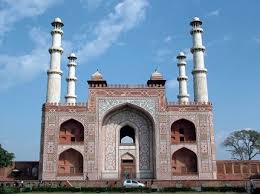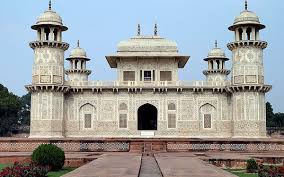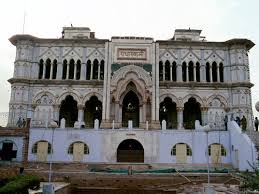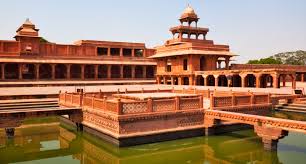Agra an old heritage city on the bank of river Yamuna, finds mention to the epic Mahabharata as Agrabana, Ptolemy the famous 2nsd century geographer, marked it as Agra on the world map. It is generally accepted that Sultan Sikandar Lodi, The ruler of Delhi Sultanate founded in the Year 1504 but the golden age of the city began with Mughals after 1526AD.
Place to visit in Agra
Taj Mahal
The Taj Mahal looms like a fairy tale from the banks of the Yamuna River. It has a rich history dating back to 1630 AD and is actually a tomb that contains the body of Mumtaz Mahal, the wife of Mughal emperor Shah Jahan. He had it built as an ode to his love for her. It's made out of marble and took 22 years and 20 000 workers to complete.
Agra Fort
The great Mughal Emperor Akbar commissioned the construction of the Agra Fort in 1565 A.D., although additions were made till the time of his grandson Shah Jahan. The forbidding exteriors of this fort height an inner paradise. The fort is crescent shaped, flattened on the east with a long, nearly straight wall facing the river. It has a total perimeter of 2.4 k.m., and is ringed by double castellated ramparts of red sandstone punctuated at regular intervals by bastions. A 9 mt. wide and 10 mt. deep moat surround the outer wall.
There are number of exquisite building like the Moti Masjid-a white marvel mosque akin to a perfect pearl, Diwan-e-Am, Diwan-e-Khaas, Jehangir's Palace, Khaas Mahal, Shish Mahal and Musamman or Samman Burj-where Shahjahan was held captive in 1666 A.D.
Sikandara
The mausoleum of emperor Akbar represent his philosophy and secular outlook, combining the best of Hindu and Muslim architectures in a superlative region. Completed in 1613 A.D. by his son Jahangir, it is one of the well preserved monuments. This is the last resting place of the Mughal Emperor Akbar.
Itmad-Ud-Daulah
Itmad-ud-Daulah is the tomb of Mirza Ghyas Beg, a
Persian who had obtained service in Akbar Court. The Marvel tomb was made by Emperor Jehangir's Queen, Noorjahan, for his father Mirza Ghyas Beg during 1622-1628 A.D..
The Craftsmanship at Itmad-ud-Daulah foreshadows that of the Taj Mahal. It was here that. "Pietra Dura"-the inlay work on marble-so characteristic of the Taj-was first used.
Radha Swami Samadhi
This is the head quarter of Radhaswami religion, here the holy ashes of the founder of the faith have been preserved. On the sprawling lawns here, is a beautiful marvel temple with beautiful carving of fruits, flowers, leaves and plants which have been reduced into stone true to nature, and are distinctive specimens of the plastic arts. This is under construction for almost 100 years.
Fatehpur Sikri
Fatehpur Sikri is an epic in red sandstone. A city of yesteryear, today lost in the mists of time. Fatehpur Sikri was built by the Mughal Emperor Akbar during 1564 A.D.. Mughal Emperor Akbar had no heir. He visited holy men to enlist their prayers for his son. When he visited Sheikh Salim Chishti who was living at the village of Sikri the saint foretold the emperor that he would be blessed with a son. When is son was born, he is gratitude, constructed his capital city and named it Fatehpur Sikri. Later, due to sortage of water and unrest in North-West, Akbar has to abandon this city. The beautiful marvel tomb of Sheikh Salim Chishti still attract thousands who seek blessings of the revered saint. Other renowned places are Dewane-e-Am, Dewane-e-Khaas, Buland Darwaja, Panch Mahal, Jodha Bai Palace and Birbal Bhawan. Fatehpur Sikri is about 39 K.M. from Agra.





